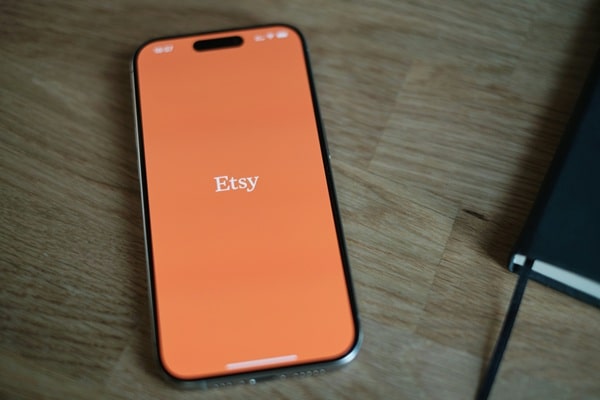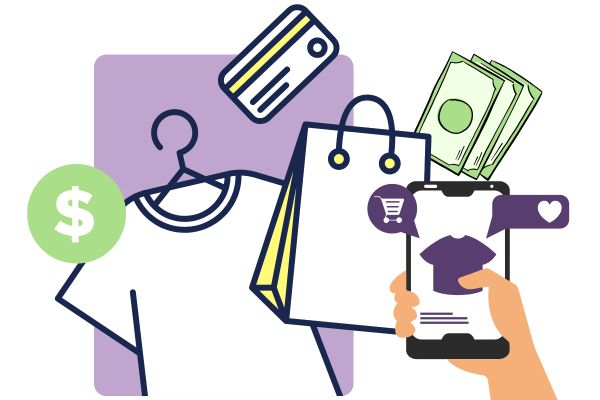Selling on Etsy is exciting, but understanding how Etsy payment processing works is crucial for getting paid accurately and on time. From hidden fees to accepted payment methods, knowing the ins and outs can save you headaches and help your Etsy Seller business run smoothly.
This guide breaks everything down so you can focus on growing your shop, not chasing payments.
And if you’re an Etsy enthusiast, you’ll benefit greatly from checking our other excellent Etsy content, such as our complete Etsy integration guide for POD sellers, how to do Etsy SEO optimization, or the pros and cons of Etsy print on demand.
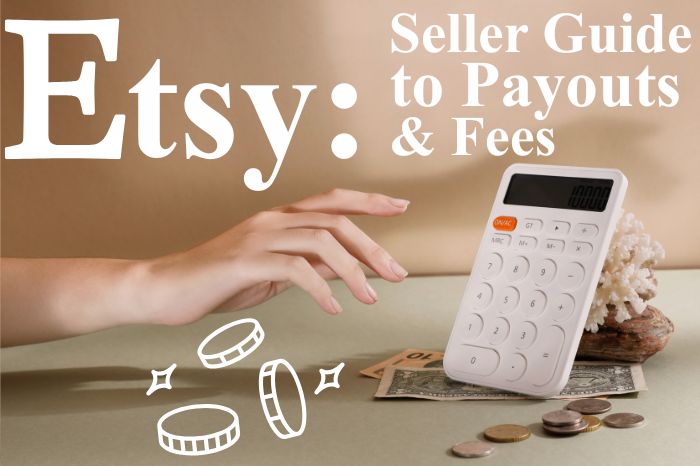
Etsy Payment Processing: How do Etsy payments work?
Etsy payment processing is designed to make selling simple and secure. When a buyer completes a purchase, Etsy collects the payment and deducts the applicable fees before sending the funds to your bank account. This process ensures that sellers are paid reliably while Etsy handles the complexity of multiple payment methods, currencies, and fraud prevention.
Sellers can view their payment status in the Etsy Shop Manager under “Finances → Payment account.” Here, you can track pending orders, processing times, and the total amount Etsy will deposit. The entire system is automated, meaning once an order is complete, Etsy handles the routing of funds without you needing to manually invoice or chase payments.
Key points to know about Etsy payment processing:
- The time it takes to receive your funds depends on your bank and Etsy payment processing time.
- Etsy handles multiple payment types, including credit/debit cards, PayPal, Apple Pay, and Google Pay.
- Etsy deducts transaction and processing fees automatically.
Etsy Payment Flow:
| Step | Description |
|---|---|
| 1. Buyer Checkout | Customer selects a product and completes payment using Etsy accepted payments. |
| 2. Payment Collection | Etsy collects the payment, deducting Etsy Payments fees and transaction costs. |
| 3. Processing | Payment is verified, fraud checks are performed, and processing begins. |
| 4. Payout | Funds are transferred to the seller’s bank account according to Etsy payment plans. |
Etsy Payment Processing: Are Etsy Payments Safe?
Yes, Etsy Payments is designed with robust security measures to protect both buyers and sellers. Etsy employs industry-standard encryption protocols, such as Transport Layer Security (TLS), to safeguard sensitive payment information during transactions. Additionally, Etsy utilizes tokenization, ensuring that no actual credit card details are stored on its servers, further reducing the risk of data breaches.
To enhance security, Etsy has implemented a mandatory account verification process for all users. This includes providing identification documents to verify the authenticity and legitimacy of accounts, helping to minimize fraud and maintain trust within the marketplace
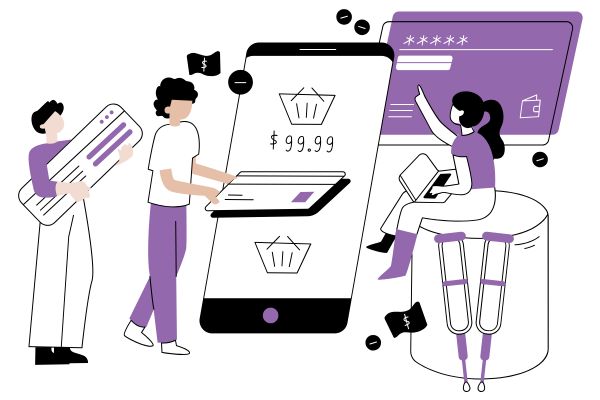
For sellers, Etsy provides a Purchase Protection program that covers eligible transactions, offering refunds for qualifying scam orders. However, it’s essential to note that transactions conducted outside of Etsy’s platform are not covered by this protection, so it’s advisable to keep all communications and payments within Etsy to ensure safety.
Key Takeaways:
- Platform Transactions: Always conduct transactions within Etsy to benefit from security measures.
- Encryption & Tokenization: Etsy employs TLS encryption and tokenization to protect payment information.
- Account Verification: Mandatory verification helps prevent fraud and ensures trustworthiness.
- Purchase Protection: Eligible transactions are covered by Etsy’s Purchase Protection program.
How do I accept payments on Etsy?
Accepting payments on Etsy is simple, but as an Etsy Seller, it’s important to understand that Etsy payment options may vary depending on your country. Etsy payment processing supports multiple methods, including credit/debit cards, PayPal, Apple Pay, Google Pay, and other local payment options in some regions. Each seller should check which options are available in their country by visiting Shop Manager → Finances → Payment settings and verifying their eligibility for different payment methods.
To set up payments:
- Go to Shop Manager → Finances → Payment settings.
- Select the payment methods available in your country.
- Enter your bank account details to receive payouts.
- Confirm your account and identity to prevent delays.
Country-Specific Notes:
- Other Countries: Availability of Etsy payment methods can differ; some countries may not support PayPal or Apple Pay. Always verify through Etsy’s official payment availability list.
- United States & Canada: Most payment options, including credit cards, PayPal, Apple Pay, and Google Pay are available.
- European Union: Credit/debit cards, PayPal, and local payment options like SEPA bank transfers may be supported.
Etsy Payment Processing: Etsy Payment Methods by Country
| Region | Available Payment Methods |
|---|---|
| United States & Canada | Credit/Debit Cards, PayPal, Apple Pay, Google Pay |
| European Union | Credit/Debit Cards, PayPal, SEPA Bank Transfers |
| Other Supported Countries | Check Etsy payment availability; some methods may not be supported |
Tips for Sellers:
- Understand local processing times and fees to price products effectively.
- Verify payment method availability in your country before listing products.
- Make sure your bank account supports the currency in which Etsy pays you.
- Keep your account and identity verified to prevent payout delays.
Read next: 45 Profitable Small Business Ideas From Home With Low Investment
What is the hidden fee on Etsy?
Many Etsy Sellers are surprised when their payouts don’t match the total sales they expected. This often comes down to Etsy Payments fees and other deductions that aren’t always obvious at first glance. While Etsy is transparent about its charges, the combination of listing, transaction, and Etsy payment processing fees can feel like a “hidden fee” if you don’t understand the full structure.
Etsy charges:
- Listing fee: $0.20 USD per item listed.
- Transaction fee: 6.5% of the item’s price (including shipping and gift wrap).
- Payment processing fee: Varies by country, usually between 3%-4% + a fixed amount.
- Currency conversion fee: 2.5% when your bank’s currency differs from the buyer’s.
- Offsite Ads fee (optional but sometimes automatic): 12%-15% per sale if a buyer comes through Etsy’s advertising
Etsy Payments Fees Breakdown
| Fee Type | Description |
|---|---|
| Listing Fee | $0.20 USD per product listing. |
| Transaction Fee | 6.5% of the item price + shipping and gift wrap. |
| Payment Processing Fee | 3%–4% + fixed fee (varies by country). |
| Currency Conversion Fee | 2.5% when your shop currency differs from the buyer’s. |
| Offsite Ads Fee | 12%–15% if sale comes from Etsy’s ads. |
Tip for Sellers: Always factor in Etsy’s card processing fees and currency conversion fees when setting your product prices. What may seem like a small percentage can add up quickly, especially for international sales.
How long does it take for Etsy to process payments?
Etsy payment processing time depends on several factors, including your country, your shop’s status, and your bank’s schedule. Generally, Etsy begins processing payouts once a buyer’s payment clears, and the funds are available to transfer to your bank according to your chosen Etsy payment plan.
- Holidays & Weekends: Payments do not process on weekends or holidays, which can extend the timeline.
- New Sellers: Funds may take longer (up to 7 days) for the first sale while Etsy verifies the account.
- Established Sellers: Most payouts begin processing within 1-3 business days.
- Bank Processing: Once Etsy sends the payout, it may take an additional 1-5 business days for your bank to post the funds.
Etsy Payment Processing Time
| Seller Type | Payout Schedule |
|---|---|
| New Seller | First payout may take up to 7 days for verification. |
| Established Seller | Payouts usually process in 1–3 business days. |
| Bank Transfer Time | 1–5 additional business days, depending on your bank. |
| Weekends & Holidays | No processing occurs; payouts resume next business day. |
Tip for Sellers: To avoid cash flow issues, plan your Etsy business expenses around the typical Etsy payment processing time. Use Etsy’s Shop Manager → Finances → Payment account to track pending and completed payouts.
What payment processing does Etsy use?
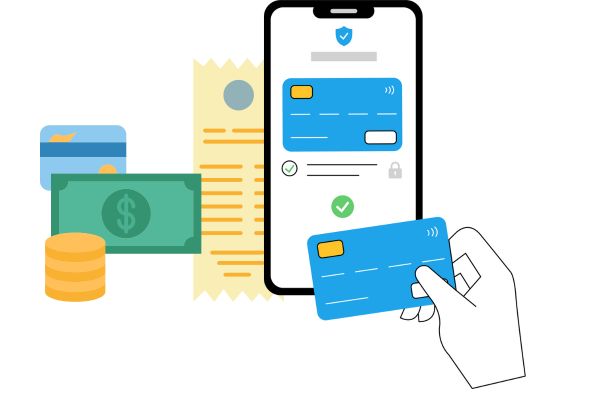
Etsy payment processing is powered by Etsy Payments, the platform’s official system that manages transactions between buyers and sellers. Instead of sellers having to set up separate merchant accounts, Etsy acts as the intermediary, collecting funds from buyers, deducting applicable fees, and then releasing payouts to sellers’ bank accounts.
Etsy Payments supports a wide range of forms of payment methods, making it easy for buyers worldwide to complete purchases. The exact options available depend on the seller’s country and the buyer’s location. This flexibility helps increase conversion rates, since customers can use their preferred payment method.
Etsy Accepted Payments
| Payment Method | Notes |
|---|---|
| Credit & Debit Cards | Visa, MasterCard, American Express, Discover. |
| PayPal | Available in supported Etsy Payments countries; in some cases, Etsy manages PayPal transactions directly. |
| Apple Pay | Accepted on iOS devices via the Etsy app or Safari browser. |
| Google Pay | Available on Android devices and Chrome browser. |
| Etsy Gift Cards & Credits | Buyers can pay with Etsy gift cards or site credits. |
| Local Payment Options | In certain regions, Etsy also supports regional payment methods (e.g., iDEAL, Klarna, Sofort). |
Tip for Sellers: Always check the official Etsy Payments countries list to ensure your location is supported. If your shop is in a country where Etsy Payments is not available, you may not be able to sell until it becomes supported.
Read next: Best Creative Business Ideas in 2025: Earn Money Online
Etsy payment processing: How to handle refunds and chargebacks on Etsy
Managing refunds and chargebacks is an essential part of Etsy payment processing. When a buyer requests a refund, Etsy automatically reverses the payment through Etsy Payments. Sellers may still be responsible for transaction and processing fees, depending on the timing. Partial refunds are possible for damaged or missing items. Chargebacks, often initiated by a buyer’s bank, can be more complex; Etsy may temporarily hold funds while investigating the claim.
To minimize disputes, always communicate clearly with buyers, provide accurate item descriptions, and ship with tracking. Keep documentation of all orders and customer interactions. Understanding how Etsy handles refunds in your country is important because Etsy Payments fees and Etsy payment processing time can vary internationally.
Refund Summary Table:
| Refund Type | Etsy Payments Fee Impact | Processing Time | Notes |
|---|---|---|---|
| Full Refund | Fees partially refunded | 3–5 business days | Depends on bank and country |
| Partial Refund | Pro-rated fee reversal | 3–5 business days | Adjust only disputed portion |
| Chargeback | Fees may not be refunded | 5–10 business days | Documentation required |
Handling refunds effectively ensures smoother transactions, reduces disputes, and protects your Etsy Seller reputation.
Tips to optimize your Etsy payment setup for faster payouts
Optimizing your Etsy payment setup can significantly improve cash flow. To streamline Etsy payment processing, first ensure your bank account information is accurate and verified. Choose a bank and currency that align with Etsy Payments countries to reduce conversion delays. New sellers may experience a short reserve period, so understanding payout schedules is crucial.
Scheduling payouts on weekdays rather than weekends can speed up fund availability. Avoid account issues by keeping your Etsy payment methods for sellers up to date, and check that your cards aren’t expired. Utilizing direct deposit in your local currency helps reduce Etsy’s current conversion fees.
Payout Optimization Table:
| Tip | Benefit |
|---|---|
| Verify bank account and card info | Prevents delays and payment holds |
| Use local currency for payouts | Reduces conversion fees |
| Schedule payouts on business days | Faster access to funds |
| Maintain accurate Etsy profile info | Minimizes account verification delays |
By implementing these strategies, sellers can reduce waiting times, avoid unnecessary fees, and improve the overall Etsy get paid experience.
Common Etsy Payment Issues & Troubleshooting
Even though Etsy payment processing is reliable, sellers sometimes run into problems. These issues can range from delayed payouts to account restrictions. Knowing the most common challenges and how to solve them will help you keep your shop running smoothly.
Etsy account suspended due to a lack of payment
One of the most stressful issues for an Etsy Seller is having their account suspended due to a lack of payment. This usually happens if you miss paying your monthly Etsy bill, which includes listing fees, transaction fees, and Etsy Payments fees. If the balance remains unpaid, Etsy may freeze your account until the issue is resolved.
To fix this, log in to Shop Manager → Finances → Your bill and pay the outstanding balance with a valid payment method (credit card or PayPal, depending on your country). Always ensure your payment details are up to date to prevent suspension. Setting a reminder to check your billing cycle each month can also help avoid surprises.
Etsy not paying me
Sometimes sellers report, “Etsy is not paying me.” This usually isn’t intentional, but rather a delay in the Etsy payment processing time. For example, new sellers often experience a 7-day hold before the first payout. Other reasons include pending bank verification, unusual sales activity (which can trigger fraud checks), or holidays that delay transfers.
To resolve this, first check your Payment account in Shop Manager to confirm if the payout is scheduled. If your bank details are outdated or incorrect, update them immediately. If everything looks correct but funds remain missing after 5–7 business days, contact Etsy Support. Most cases resolve once the system verifies your account or the bank clears the transfer.
Etsy not accepting PayPal
Some sellers worry when they see buyers unable to use PayPal. While Etsy does support PayPal in many Etsy Payments countries, in some cases, Etsy manages the transaction directly instead of routing it through your personal PayPal account. This can make it appear as though “Etsy not accepting PayPal.”
If you’re in a country where PayPal is supported, confirm in Payment settings that it’s enabled. If not, it may be due to Etsy phasing out standalone PayPal acceptance in favor of integrated Etsy Payments. In this case, buyers can still pay with PayPal, but the funds are routed through Etsy and included in your normal payout rather than arriving in your PayPal balance.
Etsy not accepting credit card
Another common frustration is “Etsy not accepting credit card” from buyers. This usually happens because of declined payments due to insufficient funds, incorrect card details, or bank security checks. For sellers, it can also indicate a temporary issue with Etsy’s payment processor in certain regions.
To minimize lost sales, remind buyers to double-check their card details and available funds. If the issue persists, suggest they try another Etsy payment option, such as Apple Pay or Google Pay. As a seller, you don’t need to take extra action unless Etsy confirms a technical issue. Keeping multiple payment methods enabled in your shop ensures that buyers have alternatives if one option fails.
Conclusion: Mastering Etsy Payment Processing
Understanding Etsy payment processing is essential for every Etsy Seller. From accepted payment methods to hidden fees and payout schedules, being prepared means fewer surprises and smoother transactions. By keeping your account information updated, monitoring your Payment account, and knowing how to troubleshoot common issues, you can ensure that your shop runs efficiently and that you always get paid on time.
But Etsy isn’t the only path to building an online business.
If you’re considering opening your own independent store, WooCommerce is another great option. WooCommerce gives you complete control over your shop, lets you customize your checkout process, and often has lower long-term fees compared to marketplace platforms. It also integrates seamlessly with WordPress, making it flexible, scalable, and ideal for sellers who want to grow beyond a marketplace.
Whether you stick with Etsy or branch out into WooCommerce, the key is understanding your payment systems so you can focus on what really matters: growing your business.
You may also like: WooCommerce Pricing Plans: What You Need to Know Before Choosing
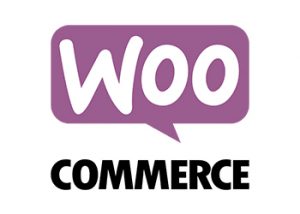
Launch Your Online Store with WooCommerce
Build your store with WooCommerce, the #1 eCommerce plugin for WordPress. Free to start (you only pay for hosting), scalable with extensions, and perfect for selling physical or digital products directly from home.
Get Started with WooCommerceEtsy Payment Processing FAQ
How much does Etsy take from a $100 sale?
For a $100 sale, Etsy charges a 6.5% transaction fee ($6.50), plus a payment processing fee which varies by country (usually 3% + fixed amount). Currency conversion may add ~2.5%. Listing fees ($0.20) and optional advertising fees further reduce payout. Sellers should calculate all Etsy Payments fees when pricing items.
Why are so many sellers leaving Etsy?
Sellers often leave due to rising fees, high competition, and reliance on Etsy’s marketplace rules. Some prefer owning their online store with platforms like WooCommerce or Shopify for flexibility, full branding control, and better profit margins.
Is Etsy like Amazon?
Etsy specializes in handmade, vintage, and creative goods, whereas Amazon is a broad marketplace for nearly everything. Etsy supports small sellers with niche audiences, while Amazon focuses on large-scale retail, logistics, and fast shipping.
Is it safe to put your bank account on Etsy?
Yes. Etsy Payments encrypts sensitive data and uses tokenization to protect your bank info. Sellers should keep account info updated and use strong passwords for added security.
What is the downside on Etsy?
Downsides include fees, high competition, and reliance on Etsy rules. Payout delays and limited control over shop branding or search visibility are common challenges. Diversifying sales channels can help reduce risks.
Is Etsy a China-based company?
No. Etsy is headquartered in Brooklyn, New York. While it connects sellers worldwide, the company itself operates from the U.S.
Is it better to sell on eBay or Etsy?
Etsy suits handmade, vintage, and craft products with niche audiences, while eBay works for resale or high-volume items. Fees and audience targeting differ, so choose the platform that aligns with your products and business goals.
Is Shopify better than Etsy?
Shopify offers full control and customization for independent stores. Etsy provides built-in traffic but limited branding. Choose Shopify for scalability and ownership, Etsy for niche audience exposure and ease of setup.
Do Etsy sellers see your credit card info?
No. Etsy Payments handles all card data securely, and sellers never see full credit card numbers. Tokenization and encryption protect buyers from fraud.
Can people on Etsy see my address?
Buyers only receive shipping info needed to fulfill orders. Your private address is kept secure and not shared publicly.
Can I trust Etsy with my card?
Yes. Etsy Payments is secure and trusted worldwide. Card information is encrypted and tokenized. Follow Etsy’s security recommendations to keep your account safe.

